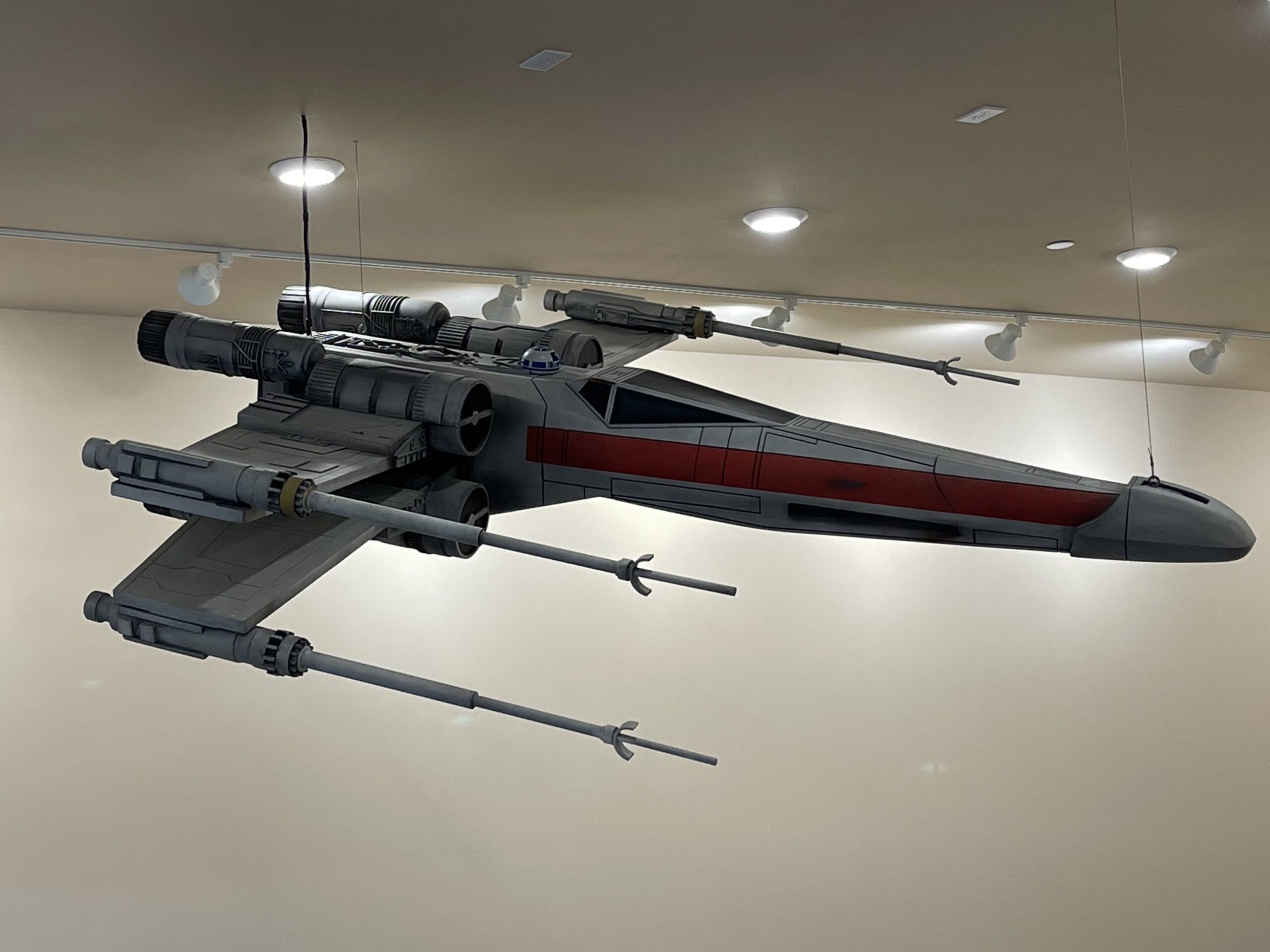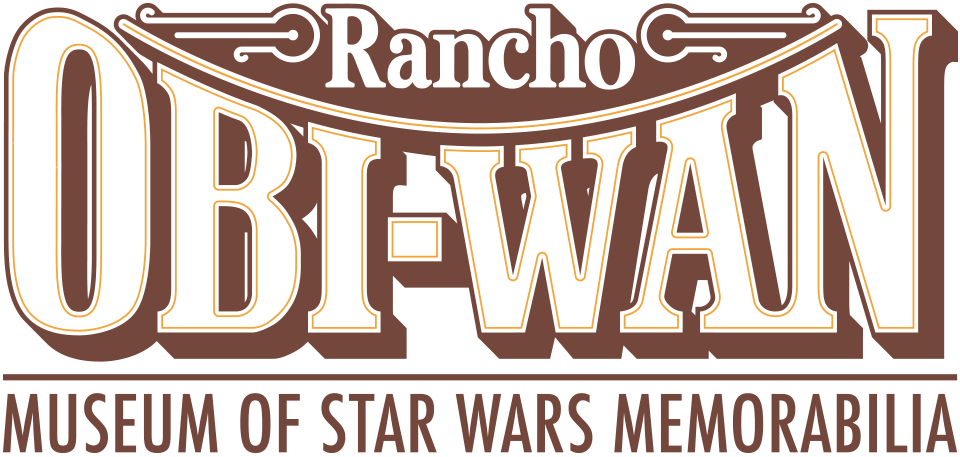In museum design, there is a concept known as the Design Object. This is the largest object in your collection that cannot readily be broken down into smaller objects. Since you need to be able to move your Design Object into and through your building, its dimensions drive things like the width of dock roll-up doors, the capacity of freight elevators, hallway sizing (widths and turn radiuses) and gallery entrance dimensions. This 6-foot-long, 6-foot wide X-wing fighter—roughly one-sixth scale—is the Design Object at the Imperial Archives.

(It is not the Design Object for The Saga Museum—that’s a 15-foot by 8-foot painting at Rancho Obi-Wan. We’re also not counting the two large permanent installations at the Archives—the theater designed by Doug Chiang and the nearly full-size replica of the cantina from A New Hope that many of you saw while it was installed at Star Wars Celebration Anaheim in 2015.)
This X-wing was formerly on display at FAO Schwarz in Orlando, Florida. (That location had an even larger model up for a while; if you remember a huge X-wing hanging upside down above you, that was the other one.)
We added this to our collection after FAO closed the Orlando store in 2004, and for the next 15 years, it waited patiently in a crate that took up an entire bay of our garage. In 2019, when we opened a 10,000-square-foot addition to the Imperial Archives, we were finally able to hang the X-wing in a place of honor, greeting visitors as they come through the door. It’s not a static model: the S-foils open and close, and the rear engines light up. (Sorry for the backlighting in the photo—it looks more dramatic in real life!)
Imperial Archives is the collection of Vic Wertz and Lisa Stevens, and is part of The Saga Museum Initiative
